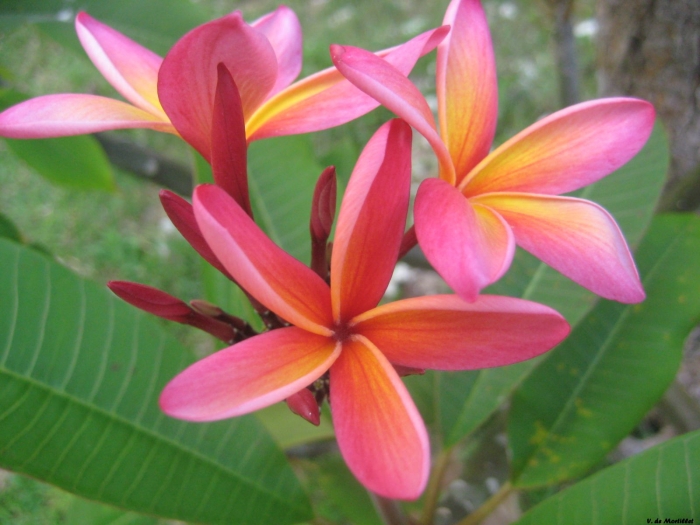Templetree
(Plumeria rubra)
Templetree (Plumeria rubra)
/
/

Saga70
CC BY-SA 3.0














































































Estimated Native Range
Summary
Templetree is celebrated for its ornamental value, particularly the beautiful and fragrant flowers that can enhance any tropical or subtropical garden. It is commonly used in landscapes, as a specimen plant, and in containers where it can be moved to protect from cold temperatures. In cultivation, Plumeria rubra requires full sun and well-drained soil, performing best in dry to medium moisture conditions. It is salt-tolerant, making it suitable for coastal areas. While it can adapt to a range of soil types, it does not tolerate wet soils well. In regions with temperatures below 50°F (10°C) during winter, it must be grown indoors or in a greenhouse. Despite its beauty, it is important to note that all parts of the plant are considered poisonous, and care should be taken to avoid ingestion or skin irritation.CC BY-SA 4.0
Plant Description
- Plant Type: Tree, Shrub
- Height: 15-25 feet
- Width: 15-25 feet
- Growth Rate: Slow, Moderate
- Flower Color: Yellow, Orange, Pink, Red, White
- Flowering Season: Spring, Summer, Fall
- Leaf Retention: Deciduous
Growth Requirements
- Sun: Full Sun
- Water: Low, Medium
- Drainage: Medium
Common Uses
Bee Garden, Bird Garden, Butterfly Garden, Drought Tolerant, Edible*Disclaimer: Easyscape's listed plant edibility is for informational use. Always verify the safety and proper identification of any plant before consumption., Fragrant, Hummingbird Garden, Potted Plant, Salt Tolerant, Showy Flowers
Natural Habitat
Native to tropical forests, savannahs, and open woodlands in Central America, Mexico, and Northern South America
Other Names
Common Names: Frangipani, Pagoda-Tree, Red Paucipan, Common Frangipani, Red-Jasmine, Rote Frangipani, Alhelí, Alhelí Cimarrón, Suche, Frangipanier
Scientific Names: , Plumeria rubra, Plumeria acutifolia, Plumeria tricolor, Plumeria bicolor, Plumeria rubra var. acutifolia, Plumeria acuminata, Plumeria mexicana, Plumeria rubra f. acutifolia, Plumeria rubra f. acuminata
GBIF Accepted Name: Plumeria rubra L.